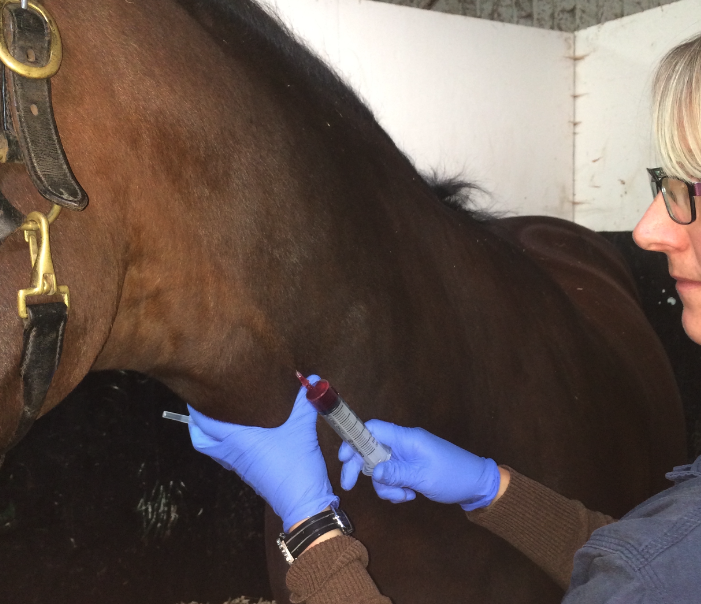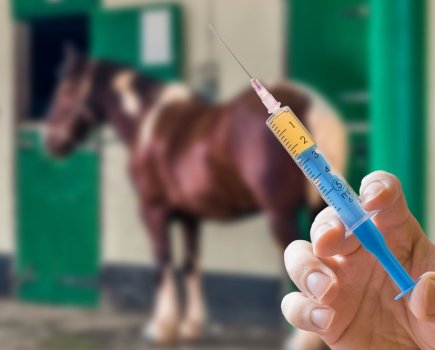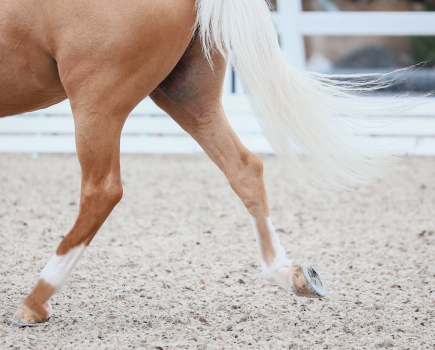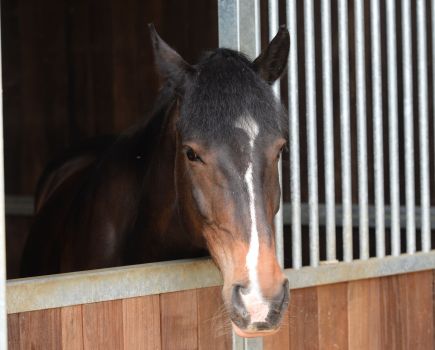Strangles is one of the most common equine infectious diseases and one horse health issue that I am asked about regularly. Part of my daily role as a vet is providing advice to clients on the end of the phone or by email where I can. This is particularly useful for owners in many circumstances, such as out of hours when deciding whether a visit is necessary, or for general advice on infectious diseases. Today it is the latter which is occupying a significant proportion of the time in my day.
Mild cases of strangles in horses may be completely overlooked, especially if a cough is heard, and can even be passed off as being a ‘bit of a virus’. In rare cases, more prolonged and serious complications can occur as a consequence of the infection.
Symptoms of strangles in horses
Strangles is an upper respiratory tract infection caused by the bacteria Streptococcus equi. For the most part, the disease is reasonably mild and symptoms of strangles in horses include a snotty nasal discharge, increased temperature, inappetence, dullness and swollen glands.
However, a good proportion of horses infected with strangles will go on to develop abscesses of the lymph nodes, most commonly those of the head, located under the jaw or behind the cheek and below the ears. These abscesses are the hallmark of the disease and the swelling of the lymph nodes, which precedes the abscess rupture, gives the disease its rather unglamorous and sordid name: ‘Strangles’.
Most horses get the upper respiratory form of strangles, then get well again, but others may develop complications, including abscesses in the stomach and nasal cavities, or the immune system can attack the horse’s own kidneys. These complications are quite rare, however.
In a serious case, symptoms of strangles in horses show as abscesses forming in lymph nodes elsewhere in the body, resulting in prolonged disease and treatment. This is a condition referred to as ‘bastard strangles’, for literal reasons. Other recognised complications include purpura haemorrhagica, which horse owners will recognise as limb swelling, often with little red spots visible over the gums inside the mouth. This is because the immune system within the horse’s body has activated in response to the infection, and may allow the blood vessels to leak.
How do I stop my horse getting strangles?
The biggest problem with a strangle outbreak is the rapid spread of the disease. Most of the time spent talking to clients is really focussing on answering one question: ‘how do I stop my horse from getting strangles?’. Fortunately, the bacteria causing the disease is easily killed and prevention is straightforward, albeit time consuming.
Understanding basic biosecurity principles is important for every horse owner to minimise the chance of contracting and spreading disease, and maximising their horse’s health. As part of the XLVets Equine campaign, ‘Plan, Prevent, Protect’, many vets collaborated to create a useful biosecurity booklet describing what you can do to manage disease outbreaks, which is freely downloadable here.
Symptoms of strangles in horses: blood testing
Blood testing for a strangles infection is a big topic of conversation. This is a very useful test if you take time to understand what the results mean. Confirming strangles as the cause of disease isn’t always straightforward, as the bacteria doesn’t grow readily once outside the horse, so repeated samples may be necessary. Of course, this means that the costs to the owner can be significant, meaning a single blood test appeals greatly.
However, of course, there is always a catch. This blood test purely reflects whether a horse has antibodies to the bacteria or not. A positive result does not tell you whether the horse has an active strangles infection or not. Horses with active infection may well have a positive result, however, in the early stages of infection it is likely to be negative. So what do the results mean?
A negative result shows that the horse does not have significant antibodies against the strangles bacteria. It takes around two weeks for antibodies to develop, which explains why horses that are in the first two weeks of infection will have a negative blood result, despite being infected. It is therefore important to only use this test after a two-week isolation period to be sure the negative result reflects an absence of disease.
Antibodies to strangles
Likewise, antibodies will hang around in the horse’s body for several months, if not years after infection has resolved. Antibodies can also form without the horse being infected itself, but merely by being in contact with other horses with the disease. This explains why some horses on a yard which has an active outbreak who have not had the disease can return a positive result — further complicating the interpretation of results!
In short, while blood testing may seem to be a cheaper and more simple alternative to scoping or having repeated nasopharyngeal swabs done, the most appropriate test depends on your horse’s circumstances and what you are trying to achieve. Prior to moving to a new yard, taking bloods may be the most appropriate test choice; whereas scoping a horse is the fastest and most reliable way of confirming presence of the actual disease itself.
What to do if your horse has strangles
- Snotty horses should be isolated as soon as any snottiness is seen, ideally in a stable that can be easily cleaned.
- People coming into contact with any horses confirmed as positive for strangles (or waiting for a test result) should use overalls or plastic aprons, gloves and separate wellies or overshoes — and these should be removed before going in with other animals.
- Regular hand washing and hand sanitiser are important.
- Separate stable equipment should be used, from forks and brushes to buckets and clippers.
- Consider disinfectant tyre baths for any vehicles coming on or off yards with confirmed cases.
- During more significant outbreaks, it’s important not to take horses out competing and so on, where they may end up mixing with unknown horses from other yards.
- To prevent the spread of highly contagious diseases such as strangles in the first place, all new horses coming onto a yard should be quarantined for the first 14 days.
- Ideally a blood sample should also be taken from a quarantined new arrival, particularly where there is reason to believe the new individual may be carrying something.
Strangles in horses: transmission routes
Did you know that strangles can survive for up to 10 days in water? As I’ve already said, strangles in horses is a very transmissible disease. Generally speaking, contagious diseases (not just strangles) are spread between horses via four main routes:
- Aerosol route — an airborne, ‘spray’ form of spread, travelling a range of distances depending on the disease.
- Droplets route — requires horse-to-horse contact.
- Fomites route — fomites is the term for objects that become host to pathogens, including tack, brushes, hands, vehicle wheels, and so on.
- Vectors route — vectors are organisms such as ticks, mosquitoes, etc, that transmit disease.
The riskiest factor for spread of strangles is the 10% of horses who are asymptomatic carriers, showing few or no symptoms, but passing on the disease through contact with other horses, the people who touch them, or occasional coughs onto grass, fences or drinking water.
Speaking to your own vet about testing is really important. You can see why the topic of strangles takes so much time out of our day and represents such a challenge. It’s a good job I can talk the hind leg off a donkey…









